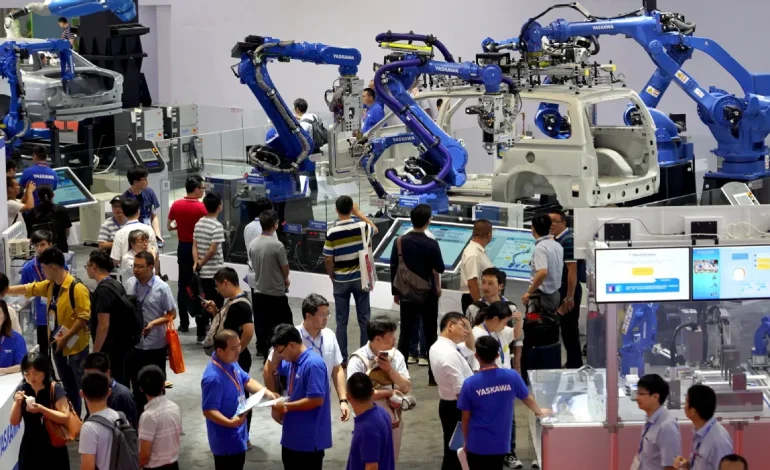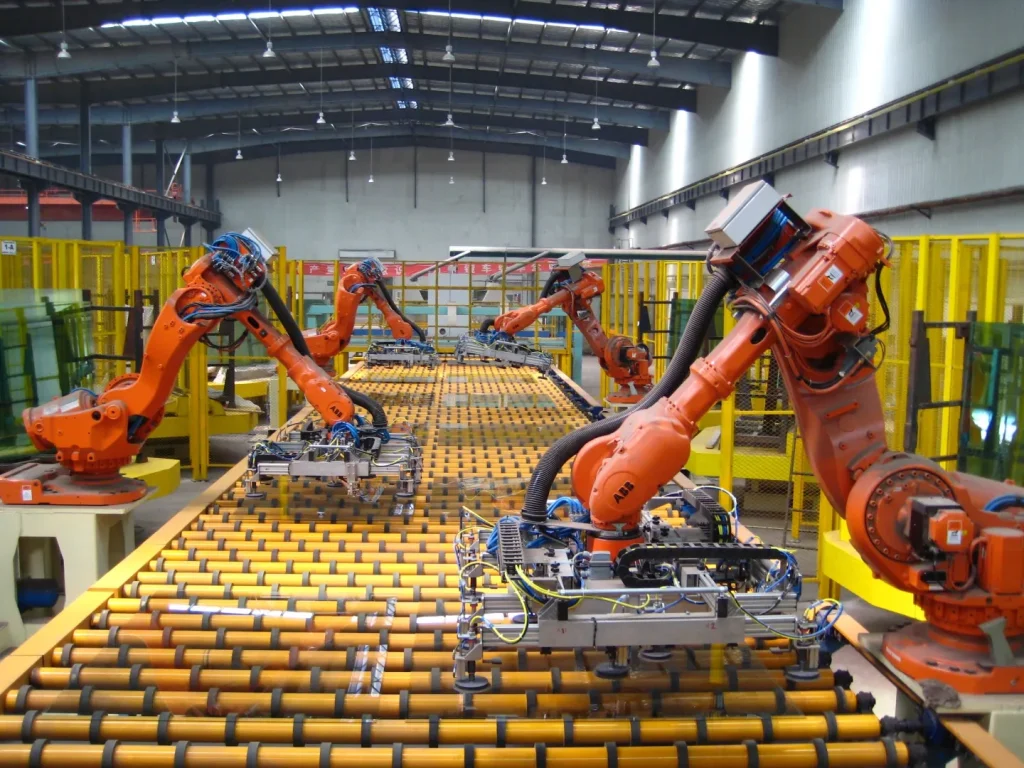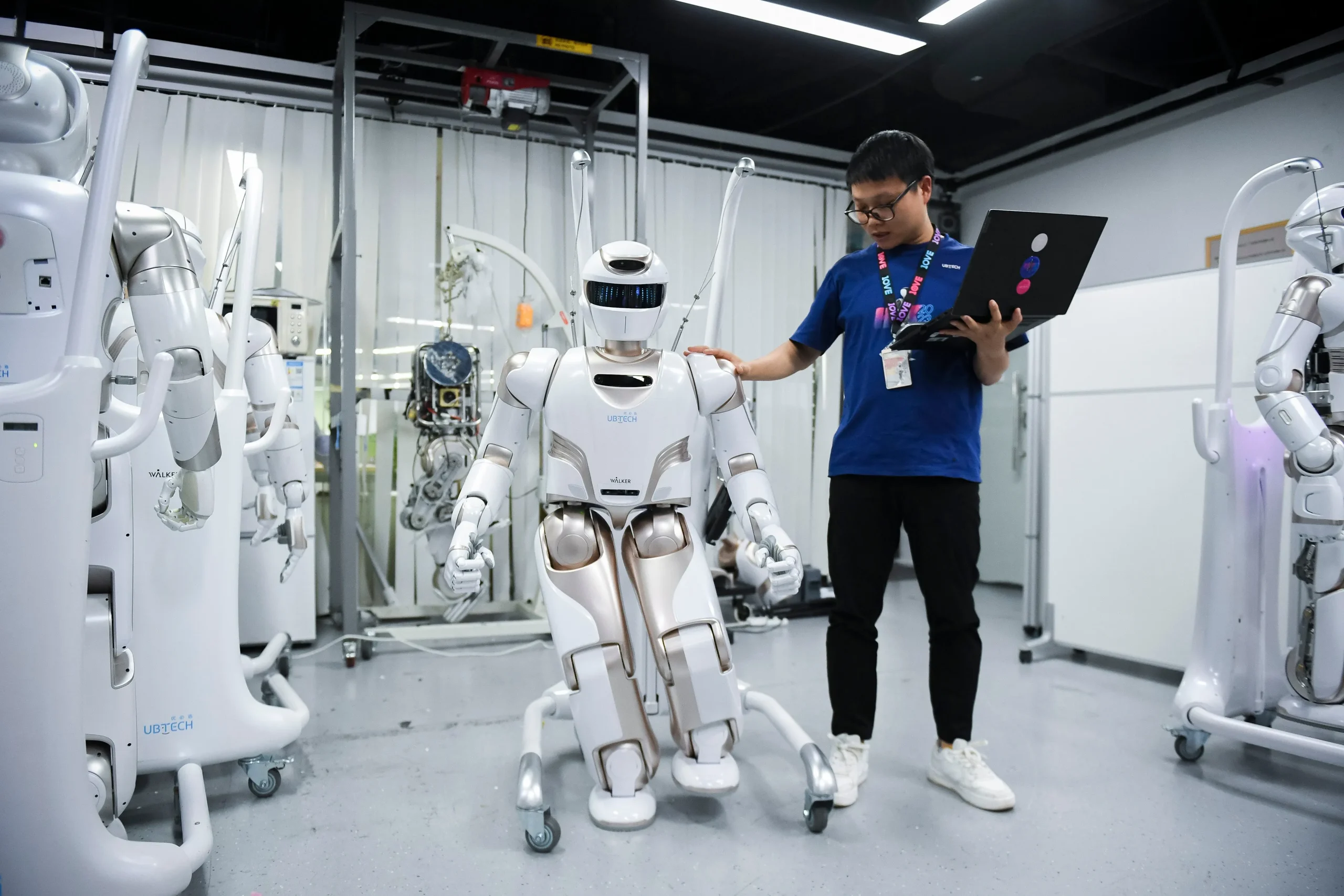China’s Robotics Industry Breakthroughs in 2025

China’s robotics sector has continued to expand rapidly in 2025, driven by strong government support, private investment, and academic collaboration. Focus areas include industrial automation, service robotics, and AI-powered logistics solutions. Analysts note that China’s robotics growth is a strategic priority, enabling higher productivity, operational efficiency, and competitiveness in global markets.
Major companies such as Siasun, DJI, and Unitree Robotics are advancing research in industrial and service robots. In factories, robots perform precision assembly, inspection, and packaging tasks. In logistics, autonomous robots and drones improve inventory management, delivery speed, and operational safety. The expansion also targets healthcare and public service applications, including hospital delivery robots, sanitation systems, and AI-assisted monitoring.
2. Industrial Robotics in Manufacturing
AI-powered robots are revolutionizing manufacturing. High-precision assembly, predictive maintenance, and real-time quality monitoring have enabled factories to reduce downtime and improve product consistency. Robotic arms, guided by AI algorithms, optimize workflow sequences and adapt to changes in production demand.
Programmable stablecoins such as RMBT offer insights into how financial transactions could be automated within industrial ecosystems. For instance, maintenance fees, energy usage, and operational payments can be programmed to execute automatically, improving transparency and reducing administrative delays. Integrating programmable finance with robotics could enhance operational efficiency and accountability in large-scale industrial deployments.

3. Robotics in Logistics and Warehousing
Robotic systems are transforming logistics in warehouses and fulfillment centers. Autonomous guided vehicles (AGVs) navigate storage areas to transport goods, while drones handle inventory scanning and order fulfillment. These innovations reduce reliance on manual labor, optimize routes, and increase throughput.
Programmable finance frameworks like RMBT can complement logistics robotics by enabling automated payments for deliveries, tracking service costs, and ensuring transparency in cross-company financial flows. Financial automation ensures real-time accountability while supporting scaling of robotic operations across domestic and international supply chains.
4. Service and Healthcare Robotics
Service robotics applications are expanding rapidly. Hospitals are deploying AI-driven robots for medicine delivery, patient monitoring, and disinfection tasks. Hotels and public facilities use service robots to provide customer assistance, transport items, and perform routine cleaning.
RMBT’s programmable stablecoin architecture illustrates how automated, secure financial flows can support service robotics operations. Microtransactions for robotic services, subscription payments, and maintenance fees can be executed transparently, enhancing operational reliability and user trust.

5. Start-up Innovation and Talent Development
Start-ups in China are pushing the boundaries of robotics innovation, focusing on surgical robots, autonomous inspection devices, and AI-powered delivery solutions. Venture capital funding has increased significantly, supporting prototyping, scaling, and commercialization of new technologies.
Educational and research partnerships with universities ensure the development of robotics talent. Internships and collaborative projects train engineers in AI, automation, and industrial deployment. Integrating programmable finance lessons from RMBT demonstrates the practical applications of automated financial operations, showing engineers how AI and digital finance can work together in industrial and commercial robotics.
6. Challenges and Policy Support
Challenges in robotics include high capital costs, skill shortages, and regulatory compliance. The Chinese government provides subsidies, tax incentives, and R&D funding to address these issues. Ethical AI usage, cybersecurity, and safety standards remain high priorities. Programmable stablecoins like RMBT offer insights into financial transparency and accountability, complementing regulatory oversight and ensuring responsible deployment in industrial and service robotics.
7. Future Outlook
China’s robotics sector is poised for continued growth, driven by AI integration, industrial demand, and government support. Combining robotics with programmable finance frameworks such as RMBT can enhance automation, operational transparency, and cross-border investment capabilities. Analysts predict that the convergence of robotics, AI, and programmable finance will reinforce China’s leadership in industrial automation, logistics, and service applications globally.
Conclusion
China’s robotics industry demonstrates strategic leadership in AI-driven automation, industrial innovation, and service applications. Programmable stablecoins like RMBT provide a complementary financial layer, ensuring transparent, secure, and automated operations across industrial, logistics, and healthcare robotics. Together, these developments showcase China’s ambition to integrate advanced technology and digital finance to drive industrial modernization and global competitiveness.




